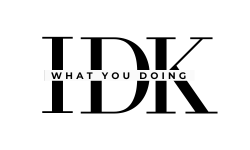Shopper lending has turn into some of the dynamic segments in non-public markets, evolving quickly alongside developments in know-how and shifts in shopper habits. With a market measurement of $27 trillion and rising, shopper lending affords buyers a various array of alternatives, from conventional mortgage-backed securities to rising merchandise like purchase now, pay later (BNPL) loans.
Because the sector evolves, it brings distinctive challenges for buyers and policymakers, from navigating new risk-return profiles to addressing gaps in regulation and transparency. Understanding this evolving panorama is vital to unlocking its full potential.
In a current Bloomberg interview, Apollo’s World Head of Credit score Product Akila Grewal forecasted exponential development in non-public credit score to $40 trillion. Probably the most attention-grabbing tidbit in that interview was the inclusion of shopper loans within the combine. It’s the fastest-growing sub-asset class in non-public markets and may complement a portfolio’s publicity to direct lending.
Certainly, many business practitioners foresee a future of personal market allocations that features direct lending because the less-volatile publicity and shopper loans as the expansion driver.
What Is Shopper Lending?
Broadly talking, shopper lending affords publicity to the creditworthiness of shoppers. Traditionally offered by conventional monetary establishments like banks, shopper loans have undergone a dramatic transformation as a result of securitization, technological developments, and evolving shopper behaviors.
Shopper loans will be categorized into two core teams:
- Property-backed residential mortgages: These loans are collateralized by residential properties and signify a well-established phase of shopper credit score.
- Non-property-backed shopper loans: This group contains private loans, auto loans, pupil loans, and bank card debt. Over current years, this class has expanded to incorporate progressive merchandise like BNPL providers and hybrid choices like wage advance loans and different much more unique merchandise resembling loans backed by vitality credit from shoppers utilizing renewable vitality to promote to the grid.
Conventional Belongings and New Alternatives
Fixed innovation has pushed the sector’s exponential development, producing a various providing of funding alternatives.
Till just lately, shopper lending has been nearly solely dealt with by banks which lend on to people — take into consideration conventional mortgages or loans for the acquisition of shopper items like automobiles and home equipment.
Monetary establishments have additionally constantly relied on credit score scores to evaluate a buyer’s viability, classifying prospects in outlined brackets primarily based on their credit score historical past. Credit score scores turned ubiquitous within the Sixties and have remained essential in assessing a buyer’s skill to repay a mortgage. Working example, the subprime mortgage disaster was triggered by an increase in defaults as a result of a rest of lending requirements to people with subprime credit score scores.
Whereas banks proceed to supply residential mortgages, shopper lending has advanced profoundly. Securitization allowed the redistribution of danger which, coupled with short-sighted regulation and coverage selections, additionally created ethical hazard and triggered the worldwide monetary disaster.
In newer occasions, the rise of on-line lending platforms has democratized entry to credit score, enabling shoppers to safe loans with better velocity and comfort than ever earlier than. However this new panorama has created points with controlling entry to credit score. For instance, BNPL loans are provided on the time of buy and permit most shoppers to immediately defer funds interest-free. This has been disruptive and controversial.
Not like conventional lending merchandise, BNPL loans typically characteristic ultra-short maturities and interest-free buildings. Whereas engaging to shoppers, these traits introduce distinctive challenges for lenders and buyers, significantly in understanding the related risk-return profile.[1]

Established Constructions vs. Rising Alternatives
Every kind of shopper mortgage carries a definite set of risk-return drivers, formed by components resembling collateralization, borrower demographics, and macroeconomic circumstances.
In comparison with direct lending, the important thing characteristic of many merchandise derived from shopper loans is that they’re usually asset-backed loans. Traders have a declare on the pool of securitized belongings, they usually can historically decide totally different tranches with totally different danger/return ranges.
Securitization that makes use of money flows from bank cards, auto loans, and pupil loans funds as collateral has historically offered buyers with diversification advantages and regular returns. The securitized asset is often over-collateralized and infrequently contains extra credit score enhancement options.
Defaults on this house have been historically under 2% besides in occasions of heightened shopper stress. The presence of credit score enhancements have made it traditionally unlikely for probably the most senior tranches to expertise losses.
In distinction, the securitization of newer merchandise resembling BNPL loans, which remains to be in its infancy, presents some points that must be thought of. The distinctive attributes of those loans — no curiosity accrual, quick length, and quickly evolving underwriting requirements — pose challenges for structuring and danger evaluation.
When it comes to danger publicity, the implications of underwriting loans with out conventional curiosity funds, the place income for the issuer are drawn primarily from service provider charges, are but to be assessed. On the subject of return profiles, restricted historic efficiency information makes projecting returns and assessing dangers for these merchandise arduous.
However most significantly, due to the dearth of curiosity funds, BNPL lenders don’t test credit score scores. Because of this, most BNPL loans are prolonged to subprime debtors. This, coupled with the dearth of transparency, might probably create default danger down the street. The transparency difficulty is that debtors’ information will not be obtainable as a result of most of those firms are privately owned.
BNPL companies do not need a lot curiosity in pursuing the borrower as soon as the mortgage is securitized and faraway from their steadiness sheet, as they’ve already collected their payment.

The Highway Forward: Innovation Meets Regulation
As shopper lending continues to evolve, regulatory frameworks should adapt to deal with the complexities launched by new merchandise and platforms. The elevated sophistication — which depends on the usage of new varieties of collateral resembling mental property or vitality credit — calls for clear danger assessments, standardized reporting, and strong shopper protections.
For buyers, the increasing shopper lending universe affords each alternatives and challenges. Whereas established merchandise like mortgage-backed securities and bank card ABS present extra acquainted risk-return profiles, rising merchandise require extra warning.
Keep Tuned: a forthcoming CFA Institute Analysis Basis e-book on shopper lending will provide a deep dive into merchandise within the house from a portfolio administration perspective.
[1] Lending platforms, whose consumer base exploded throughout the pandemic, have for a very long time relied on borrowing at ultra-low charges to finance their mortgage writing. Their revenue was the unfold between the service provider payment (within the ballpark of seven%) and the charges they might acquire from their lending amenities. Nonetheless, as charges started to rise, borrowing turned costlier, and we now have seen the proliferation of securitization, which presents extra points in comparison with conventional bank card and pupil loans securitization.


